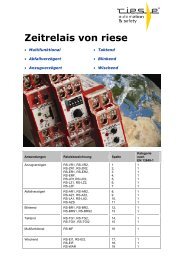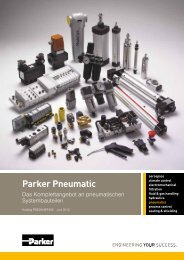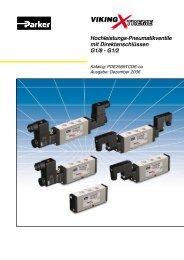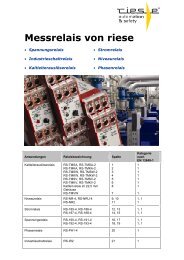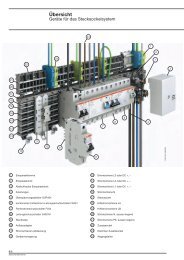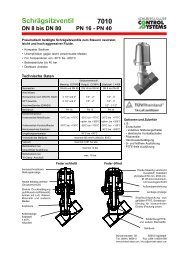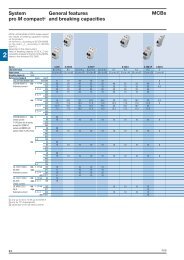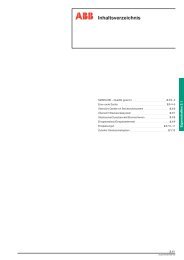Technical details System pro M compact®
Technical details System pro M compact®
Technical details System pro M compact®
- No tags were found...
You also want an ePaper? Increase the reach of your titles
YUMPU automatically turns print PDFs into web optimized ePapers that Google loves.
<strong>System</strong><strong>pro</strong> M compact ®<strong>Technical</strong> <strong>details</strong>Infl uence on RCDs of currents with DCcomponentsRCDsΔΔΔFor many years the manufacturers of electrical appliances and other electrical equipment have beenusing electronic components to im<strong>pro</strong>ve the performance of their <strong>pro</strong>ducts, increase comfort andsave energy.Loads such as washing machines with variations in spin speed, variable-speed tools, thermostatsand dimmers operate at currents with varying wave shapes (pulsating currents with DC components,inverted currents, levelled currents).There are three different types of current (fi g. A).Type I Inverted current with DC components, with value continuously greater than zero,caused by:- three-phase current- median point and three-phase current- jumper connection- unidirectional rectifi cation with inductive and capacitive levelling- Villard type voltage doubling.Type II Pulsating current with DC components sometimes with zero value, caused byohmic load with:- unidirectional rectifi cation without levelling- single-phase jumper connection with or without levelling- regulation of the symmetrical and asymmetrical phase operating angle (dimmers, RPMmeters).Type III Pulsating current with DC components passing through zero caused by inductiveloads with:- unidirectional rectifi cation without levelling- single-phase jumper connection with or without levelling- symmetrical and asymmetrical regulation of the phase operating angle (dimmers, RPMmeters).ΔIf there is a fault current to earth after an insulation fault on live parts supplied with rectifi edcurrent, the contact voltages are the same size as in alternating current.Standard RCDs, which are designed to operate with alternating current at 50-60 Hz, areinsensitive to fault currents with DC components.Non-tripping of a RCD when there are fault currents with DC components may have twoconsequences:Δ- it is dangerous for people and equipment (electrocution or fi re)11- it causes desensitivation of RCD due to excessive polarization of the transformer corethat is no longer able to send the necessary power supply to the releaser (fi gure B -hysteresis cycle 1).To avoid this <strong>pro</strong>blem, type A RCDs must be used. Thanks to the specifi c technology ofthe residual current transformer toroidal cores, the supply level is increased to a valuesuffi cient to trigger the releaser or tripping mechanism (fi gure B - hysteresis cycle 2).The sensitivity of the tripping mechanism is further increased by its connection to anelectrical circuit sensitive to the wave shape of the current.In this way the tripping of the RCD is assured for any unidirectional pulsating wave shapeeven in case of overlapping of a DC component up to 6 mA.11/64 ABB



